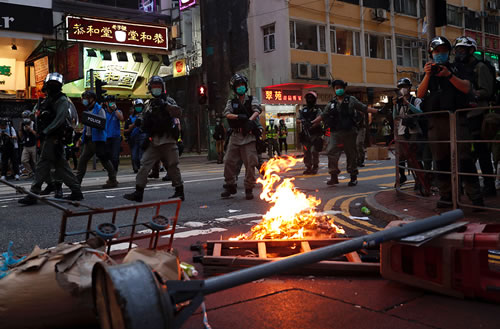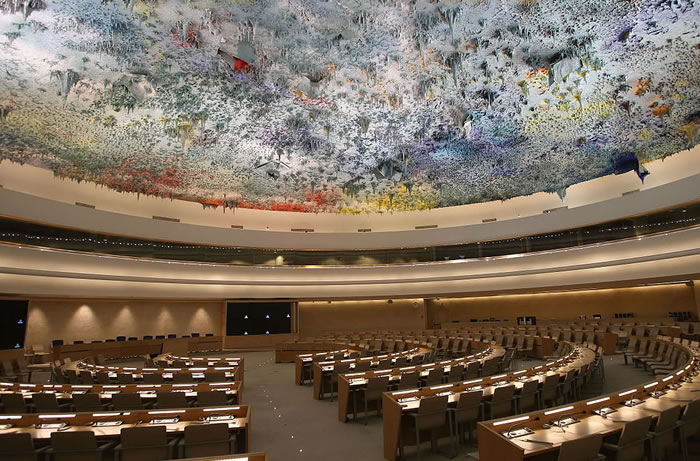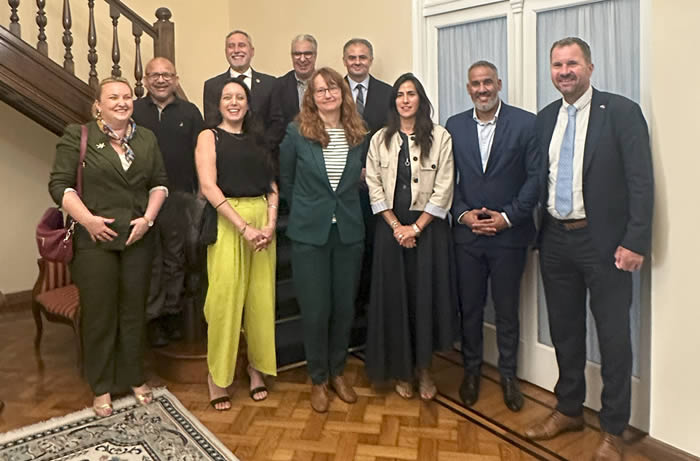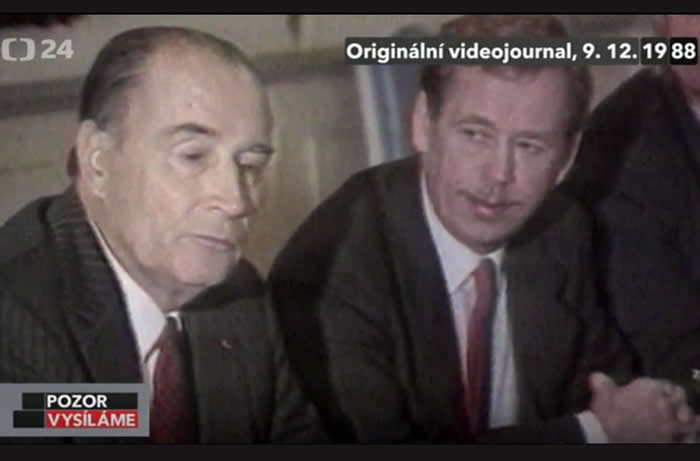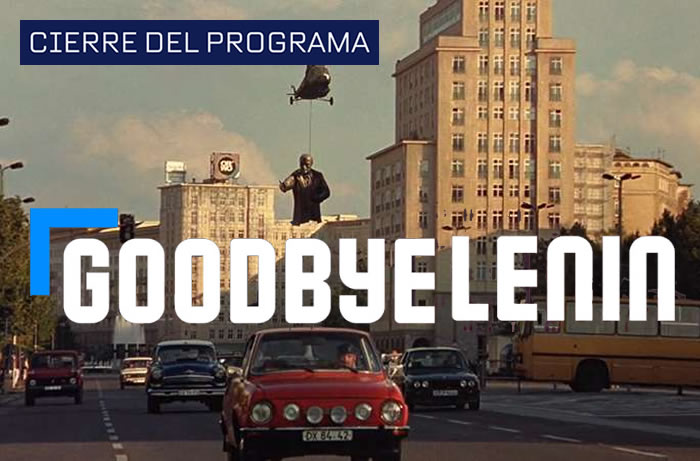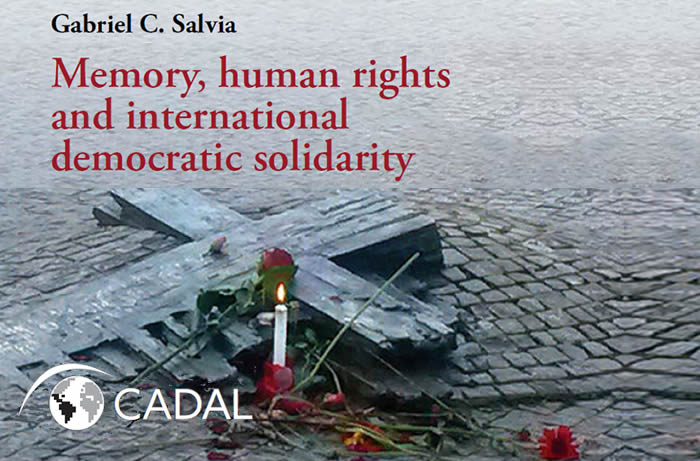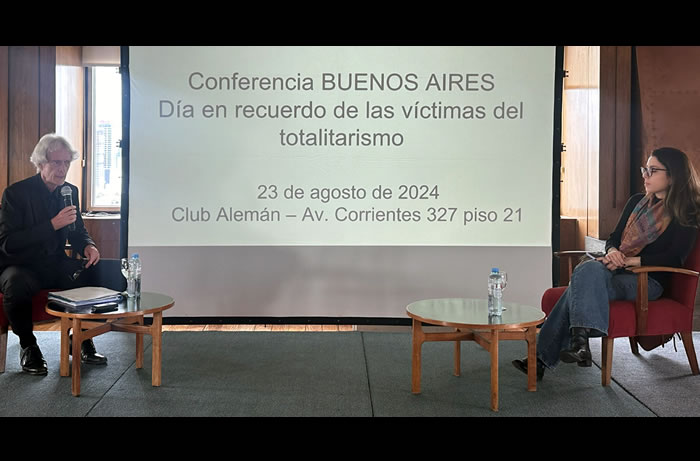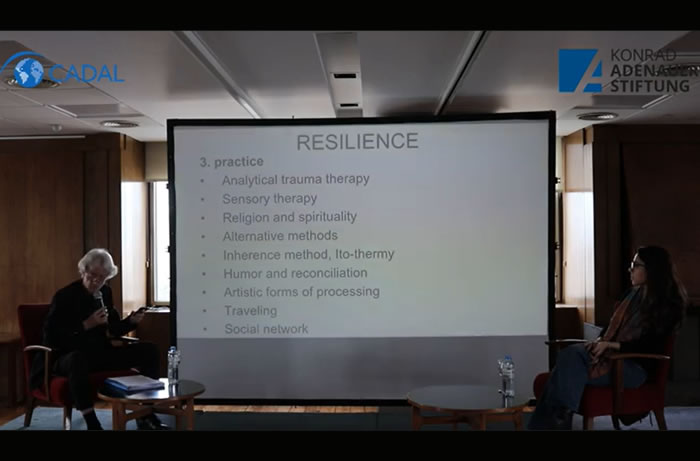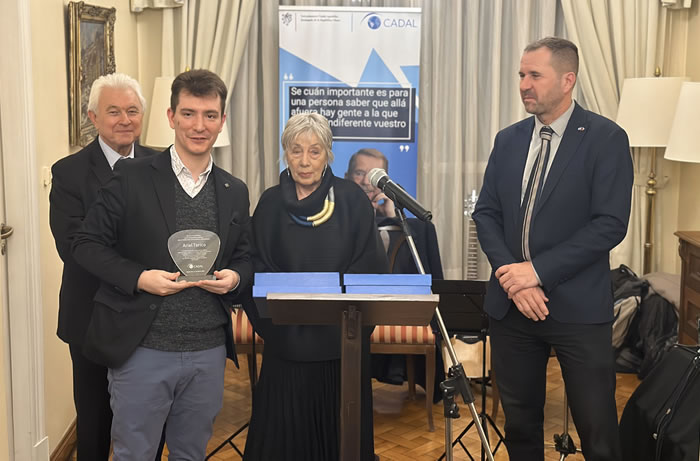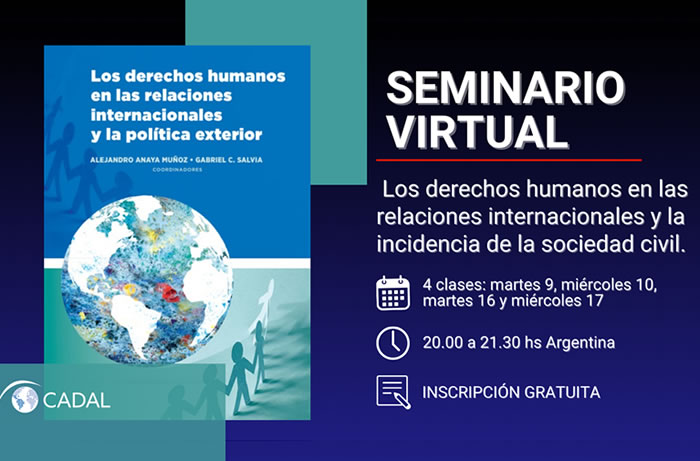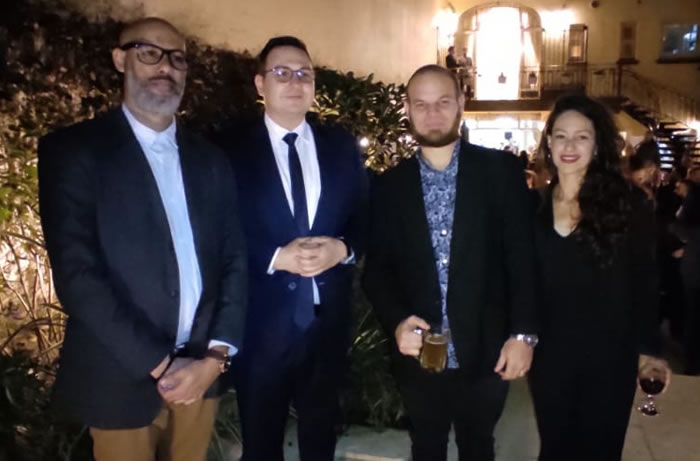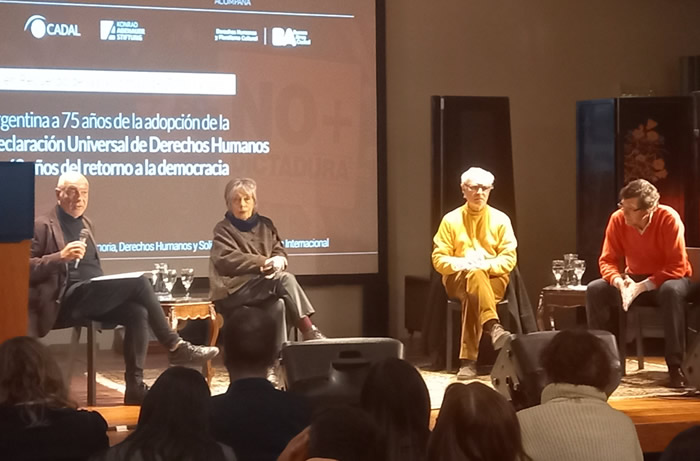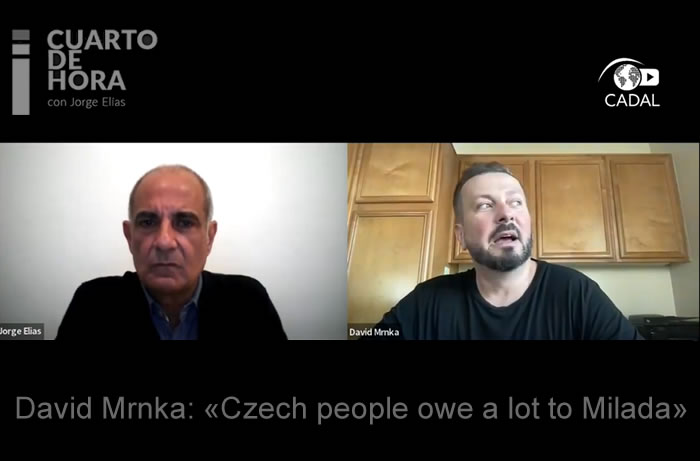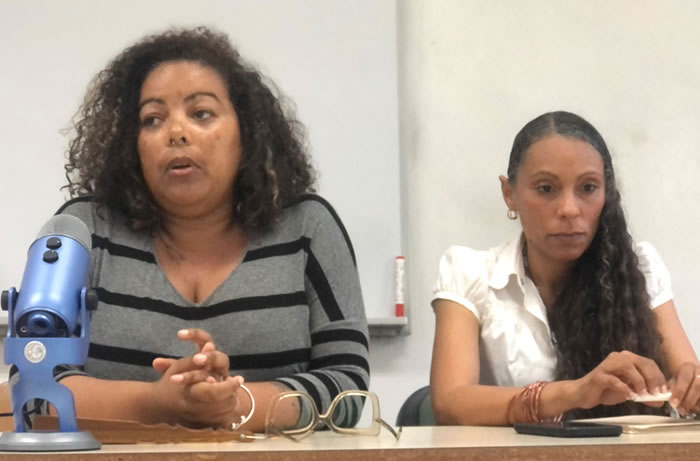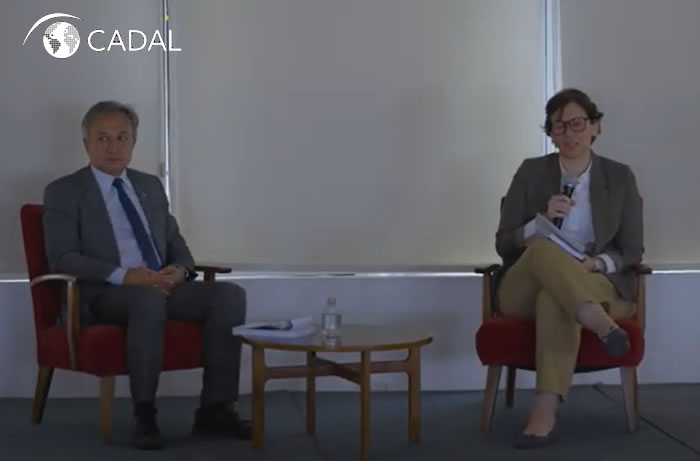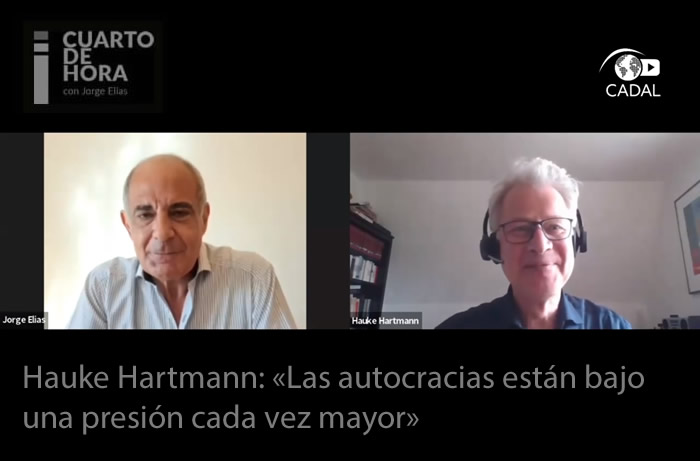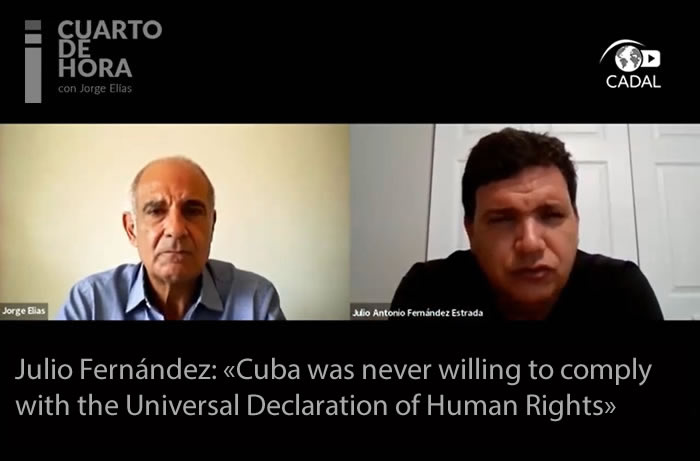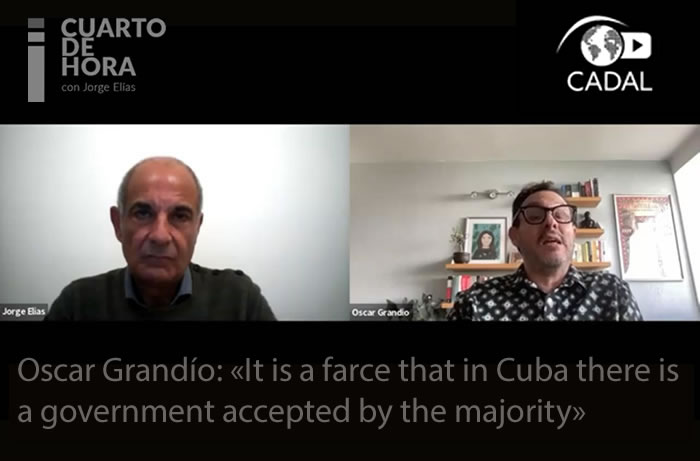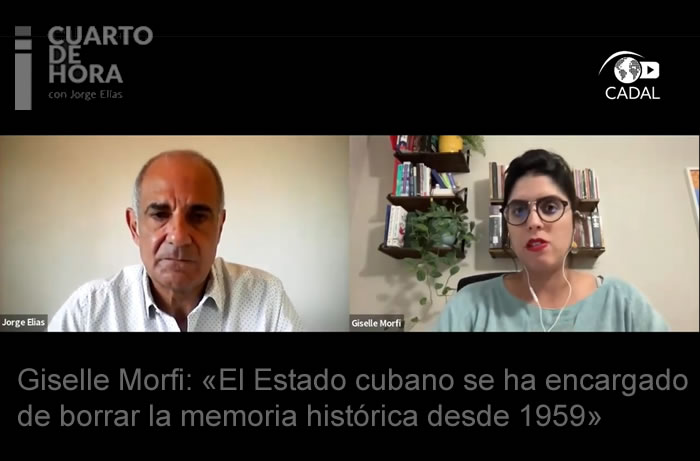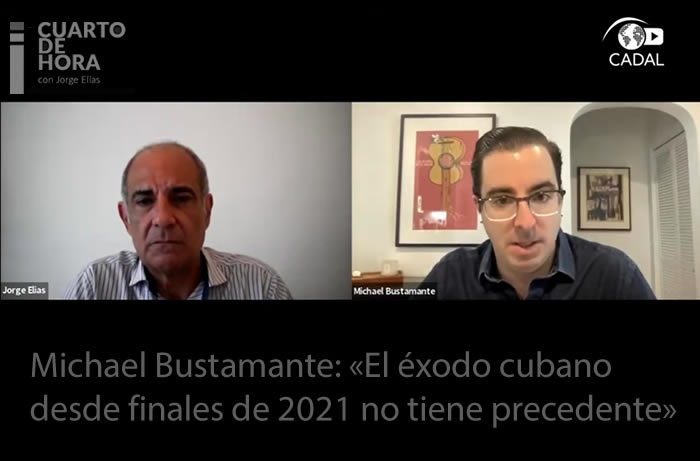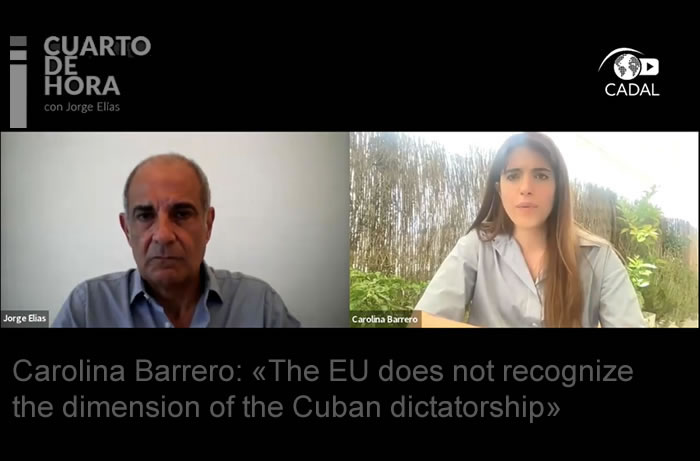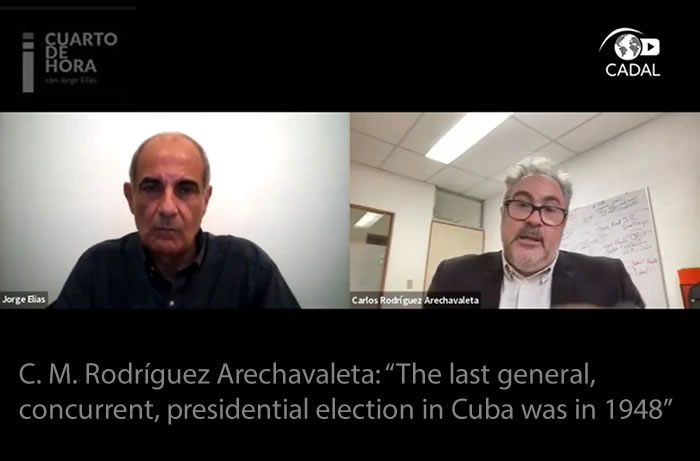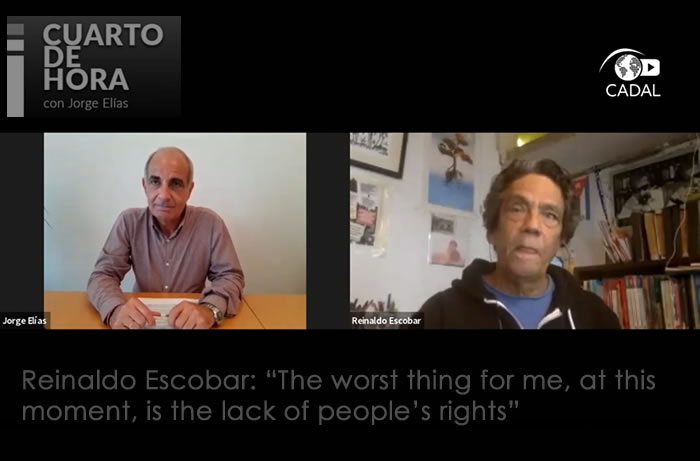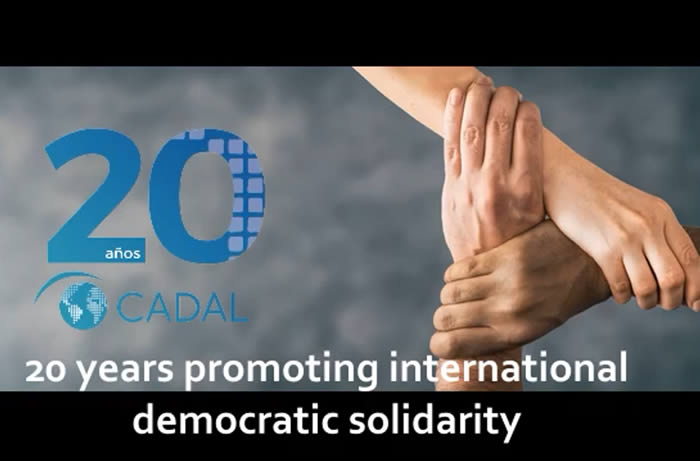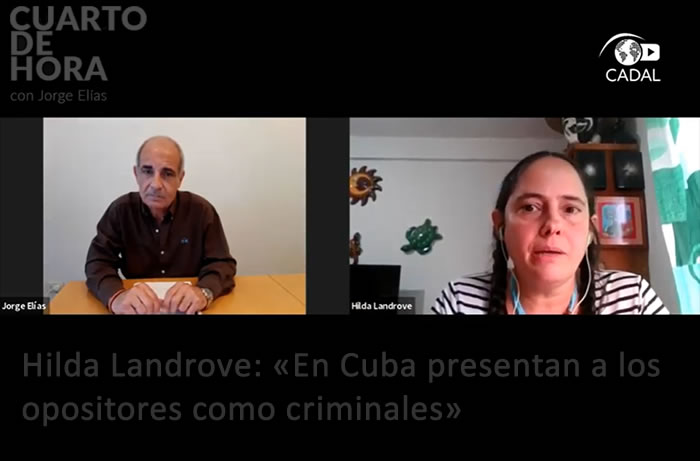Articles
Václav Havel Institute
 12-08-2023
12-08-2023Debating the rise of anti-Semitism in Latin America since October 7, 2023
On Tuesday, December 5, the Argentine Zionist Organization (Organización Sionista Argentina) invited to a virtual chat in which the director of the Simon Wiesenthal Center Latin America, Dr. Ariel Gelblung, and Dr. Ariel Seidler, of the Observatorio Web, offered some reflections on how the current war between Israel and the terrorist group Hamas has impacted anti-Semitism in the Latin American region.
By Dorothea Krueger
The current escalation of the long-running Middle East Conflict began on October 7, 2023, when the terrorist and anti-Semitic group Hamas attacked the State of Israel and, above all, its civilian population from the Gaza Strip. While news of massacres and kidnappings suffered by the Israeli population provoked strong expressions of solidarity with Israel, the ensuing war also led to an upsurge in anti-Semitic incidents around the world. The reactions and repercussions seen in Latin America were discussed during this panel organized by the Organización Sionista Argentina.
Although compared to the United States and Europe, Jews in Latin America had been experiencing less anti-Semitism and oppression on a daily basis, as of October 7, 2023, there seems to be a change for the worse in the region. This asserted Ariel Seidler of Observatorio Web, a program that monitors and reports discrimination and hate content on the Internet. During his presentation, Seidler also presented an analysis of posts in the Spanish language on the social media platform X, highlighting the differences that could be observed during the current conflict compared to previous Arab-Israeli conflicts. One of the differences, for example, could be seen in the large number of messages in support of Israel and the Jewish community and the condemnations of Hamas' actions over the first days after October 7. However, another difference with past conflicts is the fact that from day one there was a group of people who did not condemn the barbarity of Hamas.
The great continuity Seidler observed in comparison to past conflicts was found in the anti-Semitic narrative present in Spanish posts on the X platform. In total, during the current war, 12% of posts with anti-Semitic content were found within the totality of Spanish posts dealing with the conflict. In other words, this 12% of the 9.9 million posts that were collected so far reflected hatred of Jewish people, their property or the Jewish community's institutions and places of worship, according to the International Holocaust Remembrance Alliance's working definition of "anti-Semitism". This figure rose to 24.7% during periods of intensified Israeli bombardment of the Gaza Strip. Most of the anti-Semitic narratives originated in Spain (24.7%), while Colombia (14.9%) and Mexico (14.8%) lead the list in the Latin American region. Argentina accounted for around 8% of the anti-Semitic content. However, anti-Semitism in Latin America after October 7 was not only limited to the online space, as clarified by Dr. Ariel Gelblung, who in this context mentioned the demonstrations in Latin America glorifying Hamas, the opposition faced by student groups protesting the kidnapping of civilians by Hamas and the statements made by musician Roger Walters during his tour of Latin America.
Against this backdrop, the panel asked: What can be done? According to research by the Anti-Defamation League, more anti-Semitic incidents occur in regions where there is less contact with the Jewish community. Therefore, as one of the panel’s conclusions, the need to continue an open debate for the peaceful coexistence of Palestine and Israel was highlighted. As Gelblung exposed, the victims of Hamas’ terrorism should be given a face, for example: the youngest kidnapped was a baby from an Argentine family. Other possible measures offered included the denunciation of Iran's presence in the Latin American region and the use of the argument that with Hamas the Palestinian people will not live in a free democracy, much less a secular one.
Furthermore, it was clarified that in Israel, as a pluralist democracy, various political positions and opinions coexist freely, so that neither Israeli society nor the Jewish community speaks with a single voice. It is therefore necessary to promote these democratic ideals and tolerance so that discussions on the Arab-Israeli conflict are marked by solidarity with the civilian population on both sides and by legitimate criticism of policies, which, however, must but free of hateful rhetoric.
 Dorothea KruegerProjects AssistantDorothea Krueger holds a Bachelor of Arts in International Cultural and Business Studies from the University of Passau (Germany), a Licentiate degree in Intercultural Economic Management from the Universidad del Salvador (Argentina) and a Master of Arts in International Relations and Diplomacy from Trier University (Germany). In 2020, she joined CADAL as an international intern and then continued collaborating as volunteer Student Research Assistant. Since 2024 she is Project Assistant at CADAL.
Dorothea KruegerProjects AssistantDorothea Krueger holds a Bachelor of Arts in International Cultural and Business Studies from the University of Passau (Germany), a Licentiate degree in Intercultural Economic Management from the Universidad del Salvador (Argentina) and a Master of Arts in International Relations and Diplomacy from Trier University (Germany). In 2020, she joined CADAL as an international intern and then continued collaborating as volunteer Student Research Assistant. Since 2024 she is Project Assistant at CADAL.
The current escalation of the long-running Middle East Conflict began on October 7, 2023, when the terrorist and anti-Semitic group Hamas attacked the State of Israel and, above all, its civilian population from the Gaza Strip. While news of massacres and kidnappings suffered by the Israeli population provoked strong expressions of solidarity with Israel, the ensuing war also led to an upsurge in anti-Semitic incidents around the world. The reactions and repercussions seen in Latin America were discussed during this panel organized by the Organización Sionista Argentina.
Although compared to the United States and Europe, Jews in Latin America had been experiencing less anti-Semitism and oppression on a daily basis, as of October 7, 2023, there seems to be a change for the worse in the region. This asserted Ariel Seidler of Observatorio Web, a program that monitors and reports discrimination and hate content on the Internet. During his presentation, Seidler also presented an analysis of posts in the Spanish language on the social media platform X, highlighting the differences that could be observed during the current conflict compared to previous Arab-Israeli conflicts. One of the differences, for example, could be seen in the large number of messages in support of Israel and the Jewish community and the condemnations of Hamas' actions over the first days after October 7. However, another difference with past conflicts is the fact that from day one there was a group of people who did not condemn the barbarity of Hamas.
The great continuity Seidler observed in comparison to past conflicts was found in the anti-Semitic narrative present in Spanish posts on the X platform. In total, during the current war, 12% of posts with anti-Semitic content were found within the totality of Spanish posts dealing with the conflict. In other words, this 12% of the 9.9 million posts that were collected so far reflected hatred of Jewish people, their property or the Jewish community's institutions and places of worship, according to the International Holocaust Remembrance Alliance's working definition of "anti-Semitism". This figure rose to 24.7% during periods of intensified Israeli bombardment of the Gaza Strip. Most of the anti-Semitic narratives originated in Spain (24.7%), while Colombia (14.9%) and Mexico (14.8%) lead the list in the Latin American region. Argentina accounted for around 8% of the anti-Semitic content. However, anti-Semitism in Latin America after October 7 was not only limited to the online space, as clarified by Dr. Ariel Gelblung, who in this context mentioned the demonstrations in Latin America glorifying Hamas, the opposition faced by student groups protesting the kidnapping of civilians by Hamas and the statements made by musician Roger Walters during his tour of Latin America.
Against this backdrop, the panel asked: What can be done? According to research by the Anti-Defamation League, more anti-Semitic incidents occur in regions where there is less contact with the Jewish community. Therefore, as one of the panel’s conclusions, the need to continue an open debate for the peaceful coexistence of Palestine and Israel was highlighted. As Gelblung exposed, the victims of Hamas’ terrorism should be given a face, for example: the youngest kidnapped was a baby from an Argentine family. Other possible measures offered included the denunciation of Iran's presence in the Latin American region and the use of the argument that with Hamas the Palestinian people will not live in a free democracy, much less a secular one.
Furthermore, it was clarified that in Israel, as a pluralist democracy, various political positions and opinions coexist freely, so that neither Israeli society nor the Jewish community speaks with a single voice. It is therefore necessary to promote these democratic ideals and tolerance so that discussions on the Arab-Israeli conflict are marked by solidarity with the civilian population on both sides and by legitimate criticism of policies, which, however, must but free of hateful rhetoric.

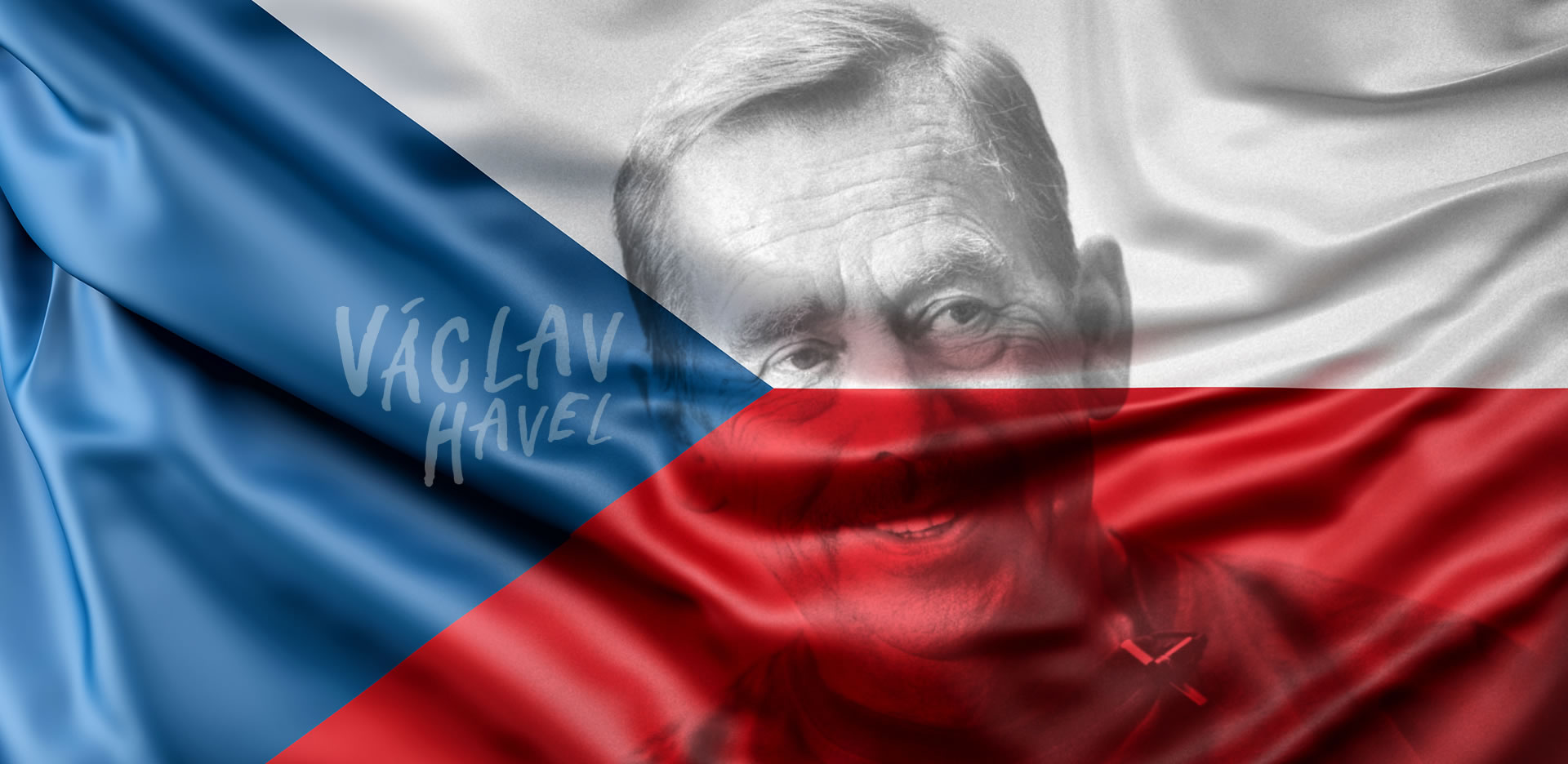


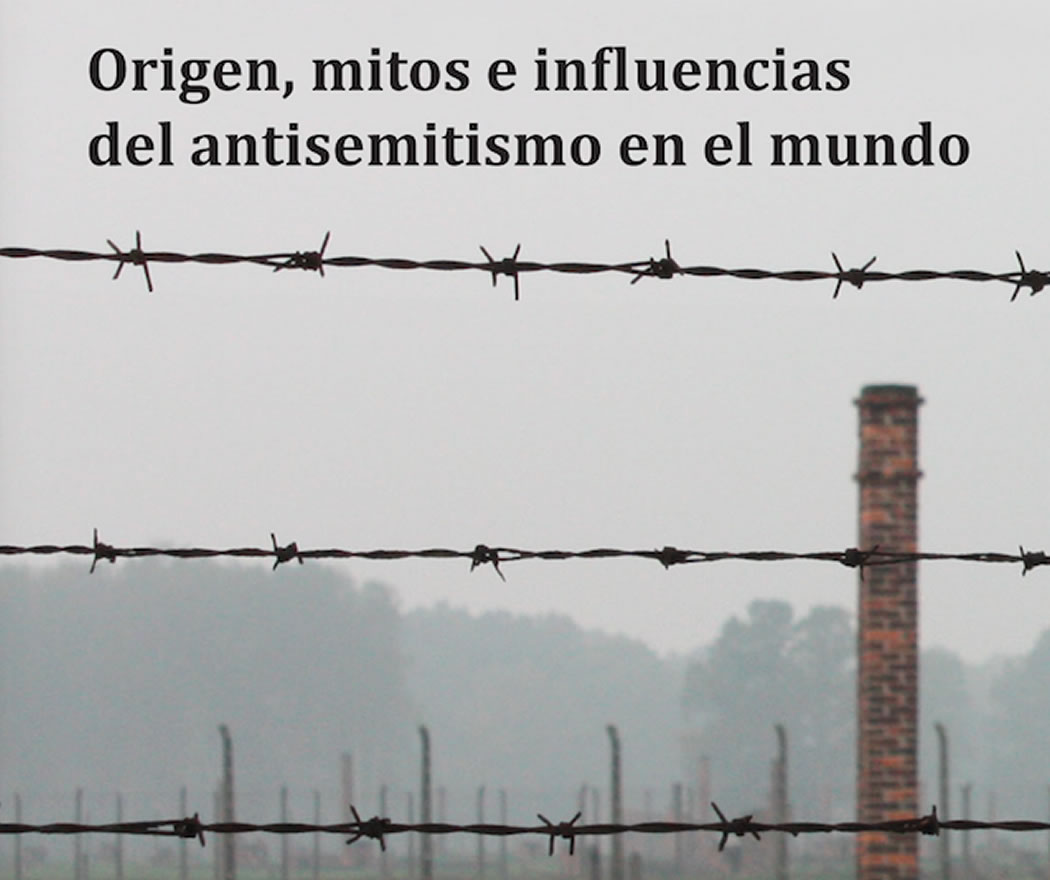
 Leer esta nota en Español
Leer esta nota en Español
